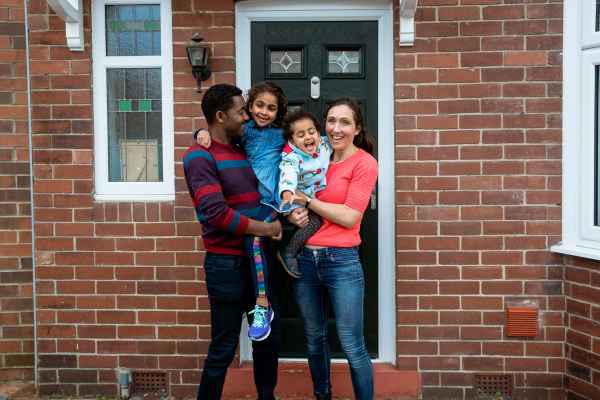The property market has felt like a rollercoaster over the last few years. There have been lots of news headlines reporting that after the rise in property prices, it’s now predicted that both prices and the number of properties we buy and sell will reduce by anything from 5% to 10% - or more.
But so far this year, the data and feedback from our own offices is that the real picture isn’t anywhere near as bad as some have forecasted.
Talking to data experts, the majority suggest that any comparisons of this year’s market performance should be based on the years from 2016 to 2019, rather than the crazy years of the pandemic.

Transactions down 6% but first-time buyers holding up the market
So far in 2023, transactions are around 6% down compared to pre-Covid year (source: TwentyEA) but, in something of a surprise turn, first-time buyers are actually holding up the market well. Rightmove is reporting that “the first-time buyer sector (two-bedroom and fewer properties) achieved sales volumes in this sector now 4% higher than in March 2019.”
The reason for this is likely to be that FTBs have for some years now been assessed on affordability based on higher mortgage rates than were actually available. So, even though rates have now risen, FTBs have been relatively unaffected and are still able to afford a property more easily than those further up the ladder with bigger properties and mortgages.
Supply of new homes remains stable
Most importantly, Propertymark (the UK's leading professional body for estate agents, of which we are members) is reporting that “the supply of new homes up for sale per member branch remained stable at 10 per branch in April. At the same time, the average number of sales agreed per member branch held at 8, which is the same as last month and the same as the pre-pandemic average (2014–2019).”
So, the good news for buyers and sellers is that fairly-priced properties are still selling and there are plenty of buyers out there to purchase – even with higher mortgage rates to deal with. Partly this is because, according to Zoopla, one in two buyers actually buy with cash or have mortgages that represent less than 50% of the property’s value, so they can still access good interest rates.

Be mindful that pricing reports can really vary
Price wise, there are lots of different reports so when you’re looking at them, it’s important to be aware of when and how that data was collected. Some measure only certain parts of the market - for example, Nationwide and Halifax only report on properties bought with a mortgage – while others measure ‘prices’ at different points in the buying and selling process.
Rightmove measures the average prices that properties are marketed at, rather than what they actually sell for, but their data is a very useful guide as to what’s happening to property prices right now. Meanwhile, the Land Registry has accurate data on sold prices for both mortgaged and cash properties, but because sales take months to complete, the prices are unavoidably out of date by the time they’re published.
Feedback from our branches is that although average property prices might be recording rises or falls, depending on the time they measure the market, local demand and supply can make a huge difference as to whether prices in a specific area are going up or down. Some properties are selling fast, for a good price, while others that aren’t quite so in demand are sticking if they aren’t priced correctly for the current local market.
What’s happening in the rental market?
From a rental perspective, things are very different. We have the longest running rise in rents since records began, according to the Government’s Office of National Statistics, which measures ongoing tenancies as well as new ones. Their data shows that, over time, average rents typically rise by 2-3% per year. But with a shortage of properties in the rental market, rents rose well above this rate across the UK in the 12 months to April:
England: 4.7%
Wales: 4.8%
Scotland: 5.2%
N.Ireland: 9.8%
However, these average figures disguise the true rise in prices for new lets, because many landlords keep rental costs low for existing tenants. According to Zoopla, new lets are rising by 11.1% year on year in the UK, varying from 6.4% in Belfast, through to double digit rises in Sheffield, Cambridge, Bristol, Cardiff, Birmingham and Nottingham, with Manchester rents up by a whopping 14.4%.

Supply is short, demand is high
The biggest reason for these higher rents for new lets is that supply is very short and demand remains high. Zoopla states: “With a third fewer homes available for rent than normal, demand per available rental home spiked even higher last year by 250% above the 5-year average.”
So it’s a tough time for tenants looking for a new home. But for landlords, as long as you can let at current market rents, even with the rises in mortgage rates you should be able to at least cover your costs - especially if your property has increased in price over the past few years and you’re able to remortgage at a lower loan to value.
What’s hugely important this year with the property market up and down, is to find out what’s actually happening on the ground in your area for your specific type of property. Whether you’re selling, buying, renting, letting or making a new investment, it’s essential to seek local advice from an expert agent who can give you an accurate picture that will help you make the right decision about whether to move or invest in property.
If you’d like to discuss your property plans, we’re always here to help. Just get in touch with your local branch.








